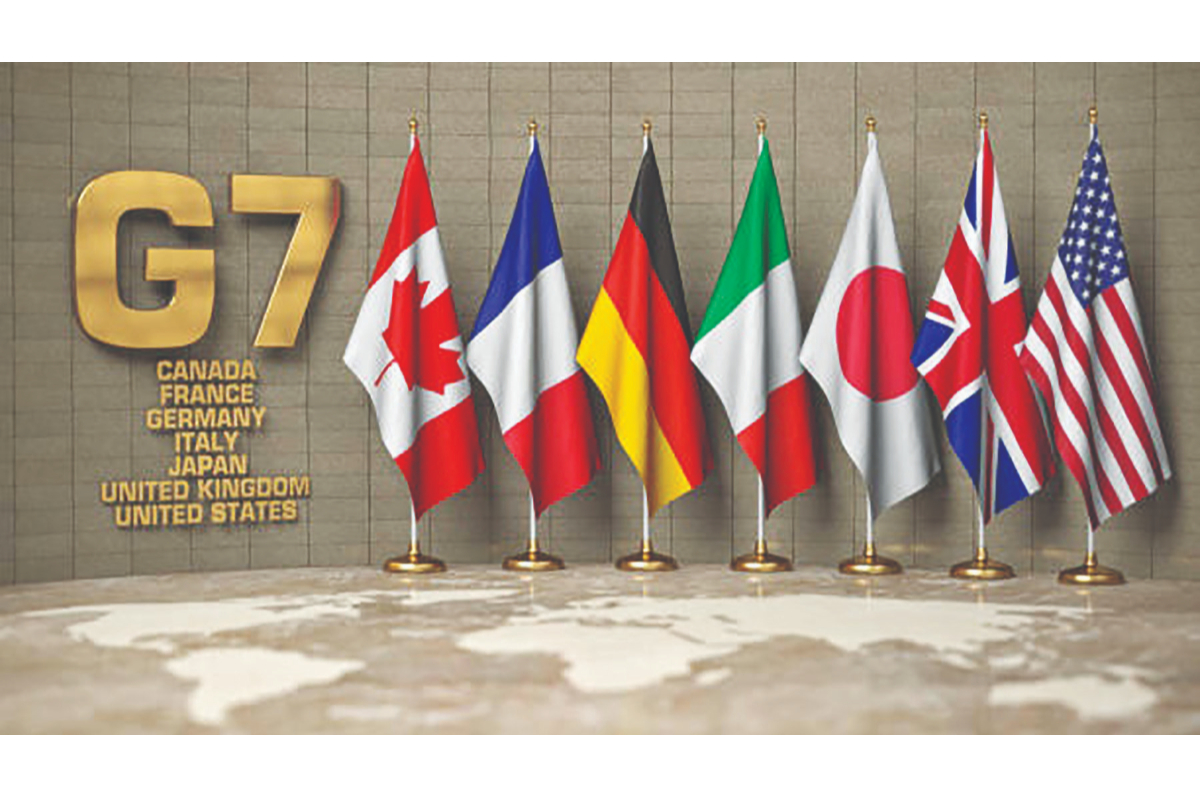
A Distant Dream
The G7 is committing $600b for the next five years to counter BRI
A few years ago, the G7 used to be called the G8, a group of eight. Russia was the eighth member. In 2014, it took Crimea, so they expelled Russia and call themselves the G7, or a group of seven. Now in 2022, Russia has invaded Ukraine and China allegedly has closed ranks with it so G7 has to deal with, what they consider a threat.
The G7 is sanctioning Russia, they are also reviving an old mission. They want to challenge China’s most ambitious project; the Belt and Road Initiative (BRI). They have announced a new plan, it’s called the Global Investment and Infrastructure Partnership.
The Global Investment and Infrastructure Partnership; the name is self-explanatory; they will fund infra projects around the world and for this, they have promised money. How much money? $600 billion. Is it old wine in a new bottle or are the G7 leaders on to something? This article will do the assessment if the G7 plan could actually or even possibly challenge the BRI domination.
First things first, this is not new they’ve rebranded and watered down an old plan; last year the G7 announced something similar, they called it the Build Back Better World (B3W). Build Back Better World, sounds familiar; Build Back Better was Joe Biden’s campaign slogan in 2021. He took it to the G7, they talked about a $40 trillion dollar plan.
The US president wanted to lead it but the US congress punctured the proposal. It never took off, so this year Biden went to Germany with a new proposal; a scaled-down version of Build Back Better World. From $40 trillion they’ve come down to $600 billion.
According to Joe Biden, “Collectively, we aim to mobilise nearly $600 billion from the G7 by 2027. These strategic investments are areas of critical to sustainable development and to our shared global stability, health and health security, digital connectivity, gender equality, and equity, climate and energy security.”
From $40 trillion to $600 billion, the last plan was supposed to finance infrastructure projects till 2035. What about the new one; the G7 will raise $600 billion to be spent over the next five years. Where will this money go to? Middle and low-income countries. The funds will finance projects in four categories; climate change, global health, digital infrastructure and achieving gender equality. How will this money be raised? The US will give $200 billion, the European Union $300 billion and the remaining $100 billion will come from the other G7 members.
Some projects have already been announced, they have been called flagship projects. One of them is a sea cable linking Europe with Southeast Asia, these are communication lines then we have a solar power project in Angola, a vaccine plant in Senegal, a modular nuclear reactor plant in Romania and a port linking Christmas Islands with the rest of the world (these Islands are an external territory of Australia).
There are plans for clear energy partnerships, as well. One of them is being rolled out in South Africa. Vietnam, Senegal Indonesia and India could be next since all of these countries were invited to this year’s summit alongside South Africa. How does this compare with China’s Belt and Road Initiative? If we look at the numbers, the G7 is committing $600 billion for the next five years. On the other side, China has already spent at least $4 trillion on the Belt and Road Initiative and is still spending. Every year China spends at least $85 billion on BRI. So, the G7’s plan does not even come close.
Of course, they did not mention China but they left no doubt about who or what they are trying to counter. If we look at their sales pitch it has China written all over it. The G7 is making this about democracies and autocracies.
According to EU Commission President Ursula Von Der Leyen: “As the global economy was just recovering, Russia’s vicious attack on Ukraine happened; driving prices up everywhere from food to energy and casting deep uncertainty, especially in the most fragile countries. These are very severe challenges. We will tackle them head-on and this is why G7 partners are gathered here, but this must not and it will not divert us away from our affirmative agenda to show the world that democracies when they work together provide the single best path to deliver results for our people and people all over the world.”
The messaging is good but we’ve heard it before to counter China’s rise. The world needs an alternative a better alternative a sustainable alternative, which is all very well but such alternatives need money and that’s exactly why Build Back Better World did not take off.
The US and its allies could not raise the funds. How will they get the $600 billion they promised now? There’s no clarity, yet the United States says it wants to get this money from different places; grants, federal funds and private investment.
On the European side, there’s a lack of coordination; German Chancellor Olaf Scholz suggested there is confusion behind the scenes, he said, “The G7 should make a single consolidated plan. We have; therefore, discussed how our investment globally in climate-neutral and low carbon energy including gas can help us as a temporary response to Russia’s use of energy as a weapon.”
Given the progress, we have achieved time is right to showcase our offer to the world under a common roof. I am convinced that the G7 makes a stronger, better and more convincing offer to partners globally but beyond steps, we have been this as a long-term undertaking.
This is a long-term undertaking he says.
Data validates the German Chancellor’s concerns. If we look at how much G7 countries spend on development assistance; 0.32 per cent of their Gross National Income. Earlier, they committed to spending 0.7 per cent. So, less than 50 per cent of the target, it’s not even one per cent of their income meaning the G7 countries do not spend on development assistance and there is no willingness to change that.
Even if they cobble up the $600 billion that they are now talking about, competing with China’s BRI will still remain a pipe dream.
Catch all the Breaking News Event and Latest News Updates on The BOL News
Download The BOL News App to get the Daily News Update & Live News.










 Read the complete story text.
Read the complete story text. Listen to audio of the story.
Listen to audio of the story.